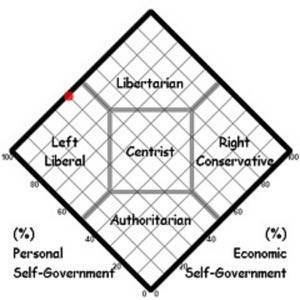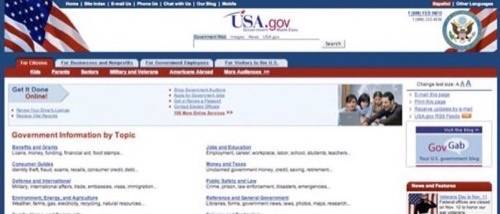Gartner recently released a couple of reports on how web 2.0 technologies are being used in e-Government. The reports are entitled The E-Government Hype Cycle Meets Web 2.0 and Government and Web 2.0: The Emerging Midoffice. Both are about how modern e-government efforts are moving away from the ‘one stop shop’ portal approach that characterized early efforts, and are turning more towards mashups and (to quote the first Gartner report) “a number of mostly adventurous initiatives with blogs, wikis or islands in Second Life.” But it’s the ecosystem of Web Services – and the reusability of content and services that Web Services enable – that really excites Gartner about web 2.0 in e-government.

Control
The ‘Hype Cycle’ Gartner report makes it plain that Gartner analysts do not consider all aspects of Web 2.0 to be useful in e-government. Wikis, Ajax, virtual worlds and blogs require “control” if used in an e-government context, according to this passage:
“Actions such as jumping on the wiki bandwagon, leveraging technologies such as Ajax for richer user interfaces or diving into virtual worlds to entice the so-called “digital natives” will result in a sudden awakening for governments. We expect several governments in developed economies to establish virtual government strategies that define how to participate in a variety of virtual communities, ranging from internal ones that engage employees, to external ones where they will reach out to constituents.
Such efforts will provide value only if they are very well-focused and conducted Äî at least initially Äî in the context of gated communities where governments can exercise some degree of control.”
Don’t all IT projects require focus? Admittedly though, for government business it is important to have strict security, ID, accountability and compliance functionality in place. These things have presented challenges for quite some time in regards to wikis and blog. However, products like Atlassian – which recently partnered with Microsoft to integrate with SharePoint – have more than enough ‘control’ to satisfy most government departments.
Gartner encourages e-government efforts to “experiment with innovative means to better serve and engage constituents”, but it warns that “such pilots have to remain very well-focused and somewhat isolated from mainstream processes for at least the next two years.”
Note: this isn’t an official government presence in SecondLife. Image by hackshaven

Web Services to the Rescue!
Where Gartner sees the most potential for web 2.0 in e-government is “the shift from service-oriented to Web-oriented architectures (WOAs)”, which Gartner states will “have a much greater potential effect on the ability to transform government than anything else in the Web 2.0 world.” By WOA, they primarily mean Web Services and mashups. In particular, Gartner says that Web Services should be reusable. They encourage information to be designed “in a more-granular fashion”, so that it can be mashed up and reused by others – which they call “(partially) unintended use”. The report also points out that this information should be made available to non-government entities, where appropriate.
In the other report, ‘The Emerging Midoffice’, Gartner discusses how mashups, REST and other Web Services technologies (bundled into the term “Midoffice”) can be used in e-government initiatives. The reason, states Gartner, is that “in the future, government single points of contact will become even less relevant than they are today.” This trend follows online consumer behavior and the popularity of web 2.0 technologies. R/WW readers will know that web 2.0 has been infiltrating the enterprise and other organizations for the past couple of years – a trend often termed ‘the consumerization of the enterprise’.
e-Government Portals Become Less Important
The second report mentions that more citizens are using [consumer] “information and service aggregators, as well as social networks”, to get the government information or services that they need. The report states:
“The first-stop shop for almost anything on the Internet is a search engine, a personal home page, or a preferred home page that matches the consumer’s needs and interests. This type of home page is likely to be provided Äî not by a government organization, but by an Internet player (such as Google, Yahoo or MSN), a media company (such as CNN or The New York Times), a telecom operator (especially for mobile devices), an investment firm, a parent association or a golf club.”
These are all channels that consumers use to find Internet services and content nowadays – and Gartner suggests that consumers will expect to find e-government services through those channels too. So Gartner’s conclusion is that governments “should make sure that their information, services and applications are accessible through a variety of different channels, some of which are not controlled or directly owned by government.”

Conclusion
These two Gartner reports suggest that there are opportunities for startups to provide information and services channels for e-government. We’re already seeing it on a larger scale with Google, eBay, Facebook and others. But there are probably hundreds or thousands of niches open to startups to explore, to provide channels for e-government. For example job search engines and aggregators could hook into government Web Services for unemployment. It will be different for each country of course.
There are challenges for startups too. On the question of accountability, the second report states that “in most cases, government remains accountable for what each of its more granular Web services is bound to provide, but service aggregators and intermediaries are liable for how they process and transfer information between those services.” Privacy and security are two other issues – Gartner suggests a federated identity scheme is required for the latter. So working with e-government will require more complexity; and perhaps giving governments the “control” they need too.
Overall, it is very encouraging to see web 2.0 technologies being used more in e-government initiatives these days. In the early part of this century I was very interested in e-government, but at that time the ‘one stop shop’ portal approach was king. In 2007 – in the era of search, aggregators, Web Services, social networks, etc – e-government is much more about ‘small pieces loosely joined’. Or at least it promises to be, which will benefit citizens as well as startups looking to tap into this very large market.
Thanks to Gartner for providing the above-mentioned reports to us. Top image by ClintJCL










